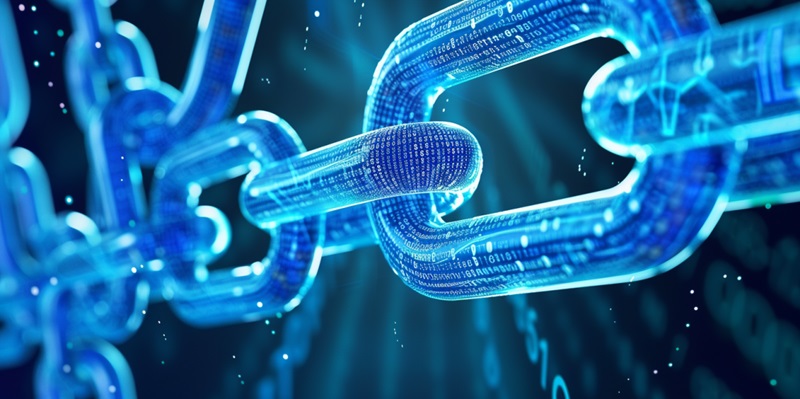Python and blockchain technology are creating a synergy that offers a host of benefits to the modern developer. Python’s simplicity and blockchain’s secure, innovative infrastructure have the potential to revolutionize digital applications. By focusing on this integration, Python developers can position themselves at the forefront of a transformative landscape.
Embracing Blockchain with Python
Python’s Ease of Use and Blockchain Foundations
Python’s syntax is recognized for its readability, which aligns well with the complexities of blockchain technology. The rise of libraries such as Web3.py has lowered the barrier for Python developers who want to interact with blockchain networks. Instead of learning new languages like Solidity, which are native to blockchain platforms like Ethereum, developers can use Python to create, deploy, and interact with smart contracts.
By leveraging Python’s core features—simplicity and readability—developers can more easily grasp blockchain’s fundamentals. Python’s extensive array of libraries and frameworks simplifies the development process and allows for quick prototyping—which is especially beneficial in the fast-evolving blockchain ecosystem.
Integrating Blockchain in Python Projects
Python developers can benefit greatly from integrating blockchain into their projects. By using open-source blockchain libraries, they can incorporate aspects like cryptographic functions, which are central to blockchain technology. Furthermore, Python’s versatility enables the development of blockchain applications that span beyond financial transactions, entering domains like data security and digital identities.
Blockchain integration brings to a Python project a high level of security and integrity of data. The immutability of the blockchain, combined with Python’s robust back-end capabilities, equips developers with tools to build systems where transparency and trust are critical to the user experience.
Benefits of Blockchain for Developers
Cost-Efficiency and Disintermediation
Blockchain technology is remarkable for its ability to remove intermediaries, resulting in increased cost efficiency. The decentralized nature allows for transactions to occur directly between parties, which can deeply cut the transaction fees that would normally be incurred with traditional intermediaries.
Additionally, blockchain empowers the use of smart contracts, digital agreements that execute automatically when predetermined conditions are met. By using Python to write and deploy smart contracts, developers can streamline processes, from payments to complex legal agreements, thereby removing the need for costly verification from third parties.
Trust and Transparency in Applications
Blockchain’s immutable ledger means that once data is recorded, it cannot be changed without the consensus of the network. This is particularly valuable for applications where data integrity is paramount. Python developers can leverage this to create supply chain systems where the provenance of products can be traced clearly, fostering consumer trust.
For artificial intelligence, decisions made by algorithms can be logged on-chain to create an auditable trail. This transparency in AI decision-making processes can alleviate concerns about bias or errors, as stakeholders can examine the decisions made by the AI in a tamper-proof environment.
Real-World Applications and Innovations
Blockchain in Decentralized Identity
In the realm of digital identity, blockchain presents a great opportunity. With digital identifiers (DIDs), users can manage their online identities without reliance on central authorities. Python developers can integrate blockchain to build applications that provide users control over their personal information, enhancing online privacy and security.
This application of blockchain is significant in combating identity theft and fraud online. The verifiable and decentralized nature of blockchain, interfaced with Python’s ability to quickly process data, can establish a more reliable identity verification process across various digital platforms.
Leveraging IoT and Blockchain
When Python developers combine blockchain with IoT, they unlock a treasure trove of possibilities. Secured by blockchain, data generated by IoT devices can be transmitted reliably, mitigating the risk of tampering. Autonomous micropayment protocols can be established between machines, allowing for revolutionary business models where transactions are conducted transparently and autonomously.
Imagine smart cities powered by devices that communicate and transact seamlessly. Streetlights that pay for their power consumption in real-time or vehicles that negotiate traffic patterns autonomously. Integrating blockchain with Python opens the door to a new age of interconnected devices that are secure and independently operative.
The Future Landscape with Blockchain and Python
Democratizing Asset Ownership
The concept of asset tokenization represents a new frontier in asset management. By using blockchain, Python developers enable assets to be broken down into digital tokens that represent a fraction of the underlying asset. This can lead to opening up investment opportunities typically reserved for the wealthy to a broader audience, democratizing access to wealth-building strategies.
Additionally, tokenization facilitated by blockchain can significantly enhance asset liquidity. Assets such as real estate or art become more easily transferable and divisible, thanks to Python-driven smart contracts that manage ownership and transaction rules.
Building Decentralized Applications
Python’s straightforward syntax harmonizes with the robust framework of blockchain, paving the way for groundbreaking developments in the tech world. This fusion is beneficial for developers eager to innovate and secure digital transactions. Python’s ease of use combined with blockchain’s immutable ledger system empowers developers to create cutting-edge applications with enhanced security features. As Python programmers tap into the capabilities of blockchain, they become pioneers in a tech revolution that is reshaping how digital transactions and applications are managed. By exploring this intersection, developers are not just keeping pace with technological advancements but are actively contributing to the evolutionary journey of digital infrastructures. As such, Python developers are encouraged to delve into blockchain to leverage these advancements for more secure, efficient, and transparent solutions in the digital age.

